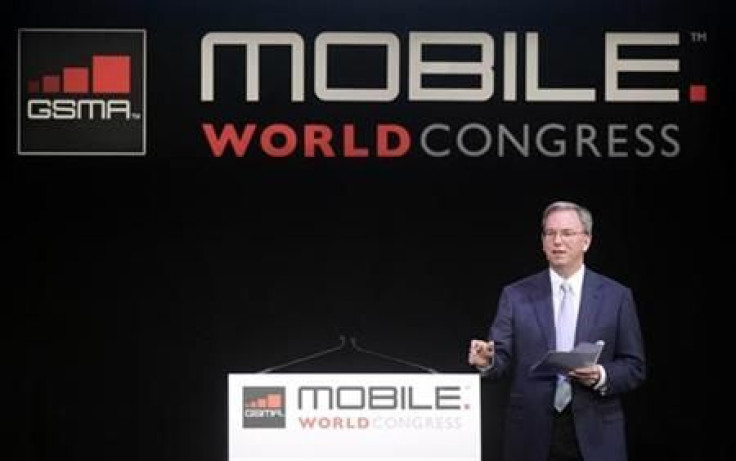Winners at Mobile World Congress 2011 (AAPL, GOOG, RIMM)

Brokerage Jefferies & Co. said winners at the Mobile World Congress (MWC) are Blackberry maker Research In Motion (RIM), Samsung, Apple Inc., and Google Inc.'s Android. The brokerage said the three major MWC themes are: the commoditizing power of Android for tablets, network of networks, and video optimization.
RIM -- Manages some positive surprises
RIM managed to pull some surprises out for MWC 2011 in spite of a big Consumer Electronics Show (CES).
RIM announced new flavors of the Playbook LTE available in the H2 and 3G/HSPA+ likely available this summer, and TD phones coming to China Mobile in first quarter or second quarter much earlier than we and the Street thought, said Peter Misek, an analyst at Jefferies.
In addition, RIM announced the acquisition of Gist, an online cloud-based PIM manager that adds significant value to PIMs by creating, managing and finding contacts across social media platforms, email services, and IM programs; integrated carrier billing for App World at Telefonica (and other carriers, but not specifically called out); the creation of BBM gifting and money transfer; and integrated Blackberry Travel App that is a superapp for managing and integrating into your PIM all your personal and business travel intelligently.
RIM heavily showcased the Playbook at its booth. The Playbook is a bit heavy but had some of the best graphics at the conference and is fast. A March launch is expected.
RIM's booth had few RIM employees (Misek believes they are focused on fine-turning QNX for the Playbook launch and developing QNX-based handsets), but the booth was staffed by many developer partners. Android apps in Adobe Air take 2 hours to 3 days to port. A Java virtual machine is being developed but no details on its timing.
RIM sounds very optimistic on carrier subsidies and support for the Playbook while remaining coy on new smartphones, Android apps, and QNX, all of which Misek expects to be announced by the end of May (most likely at RIM's Blackberry World conference).
Misek believes VMware's demo of a virtualized Android OS (on an LG phone) at MWC supports his belief that Android apps will be running on RIM devices sometime this year.
Apple -- Not at MWC but still making headlines
Subscription service: Misek sees Apple's launch of a subscription service in the App Store for magazines, newspapers, and other content as mildly positive. The subscription service will utilize the same App Store payment process, and Apple will take a 30 percent cut.
Cloud services: Misek sees the launch of a several cloud-based services for iOS users by the summer. One service Misek believes will allow users to access their entire iTunes library and all user owned content. Another service will create subscriptions for content and finally Misek sees a major update to MobileMe.
iPhone 5: WSJ and other media outlets are suggesting multiple iPhone 5 prototypes. Misek believes this makes sense and in particular he sees Apple's desire to create a lower entry point as high, as long as the experience is up to standard.
Hence Misek sees the Nano phone as a bona fide product with a reasonable chance of being launched this year. Other prototypes such as slide-out keyboards etc. Misek sees as possible but less likely. Misek does see the iPhone 5 as moving to a 4-inch screen versus the current 3.5-inch screen.
LTE phone: Misek continues to see an LTE iPhone launch by November.
Samsung -- Star of the conference
Samsung receives our Best in Show award for the Galaxy S 2 smartphone that was substantially better than any other phone at MWC. It was thin, light, responsive, and had a great screen, said Misek.
Galaxy S 2 smartphone was also the most advertised phone at the show, meaning that Samsung knows it has a winner and can be expected to put a great deal of production and marketing resources behind the device. Specifications: 4.3-inch Super AMOLED screen, dual-core Samsung Exynos.
Galaxy Tab 10.1: the Honeycomb tablet was very light (lighter than iPad and Xoom) and one of the best tablets at the show. Motorola Mobility's CEO noted that Samsung's Honeycomb tablets were coming fast on its heels. This one is likely to be priced $100 to $200 less than Xoom, if Misek were to guess.
Tab II yet to be unveiled but Misek expects the form factor to be maintained.
Android
Malata (a China white box manufacturer) had a really nice tablet (Tegra 2, Honeycomb, thin, well built, second quarter launch. While they currently only have distribution in China and Italy, they have plans for a US launch.
Malata's solid product illustrates that Honeycomb will quickly commoditize Android tablets. In the near-term, handset original equipment manufacturers (OEM) are in the lead due to PC OEMs and the PC supply chain having less experience purchasing and integrating key tablet components (NAND, mobile DRAM, ARM chips, etc).
Motorola Mobility has a slight lead with its Xoom launch, but will be quickly followed by a plethora of comparable Android tablets with the key being cost reductions. For Android tablets, Misek expects Samsung to have an advantage due to its scale and vertical integration.
Motorola Mobility is attempting to avoid the commoditization by focusing on the enterprise (e.g., with its 3LM acquisition) and adding middleware functionality (e.g., behavior analysis, app stability awareness, etc.).
Honeycomb is definitely more tablet centric and has better display support compared with 2.2 (Froyo) and 2.3 (Gingerbread) but there are still some tweaks for Google to iron out. That said, Misek expects future Android upgrades to integrate much of the middleware functionality by which Motorola Mobility is trying to differentiate itself.
© Copyright IBTimes 2024. All rights reserved.











